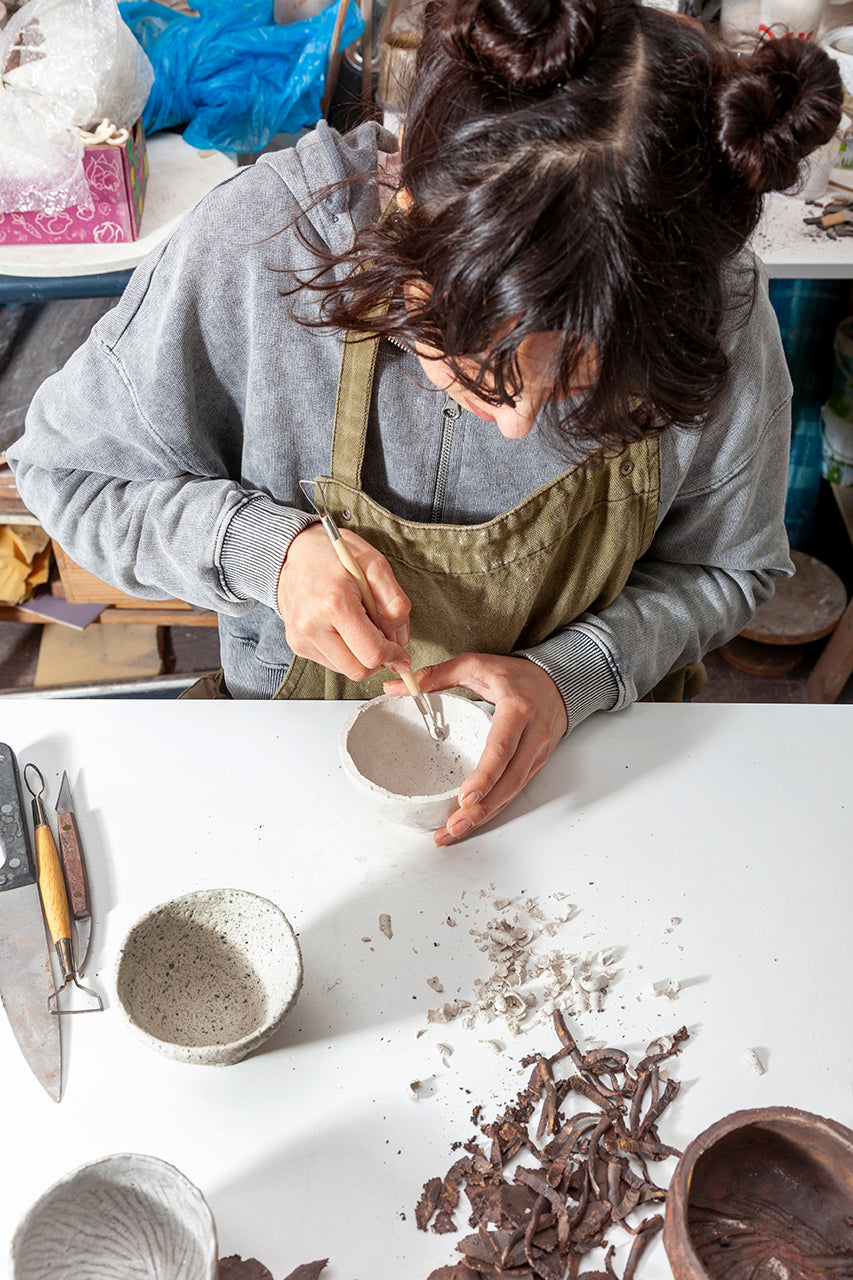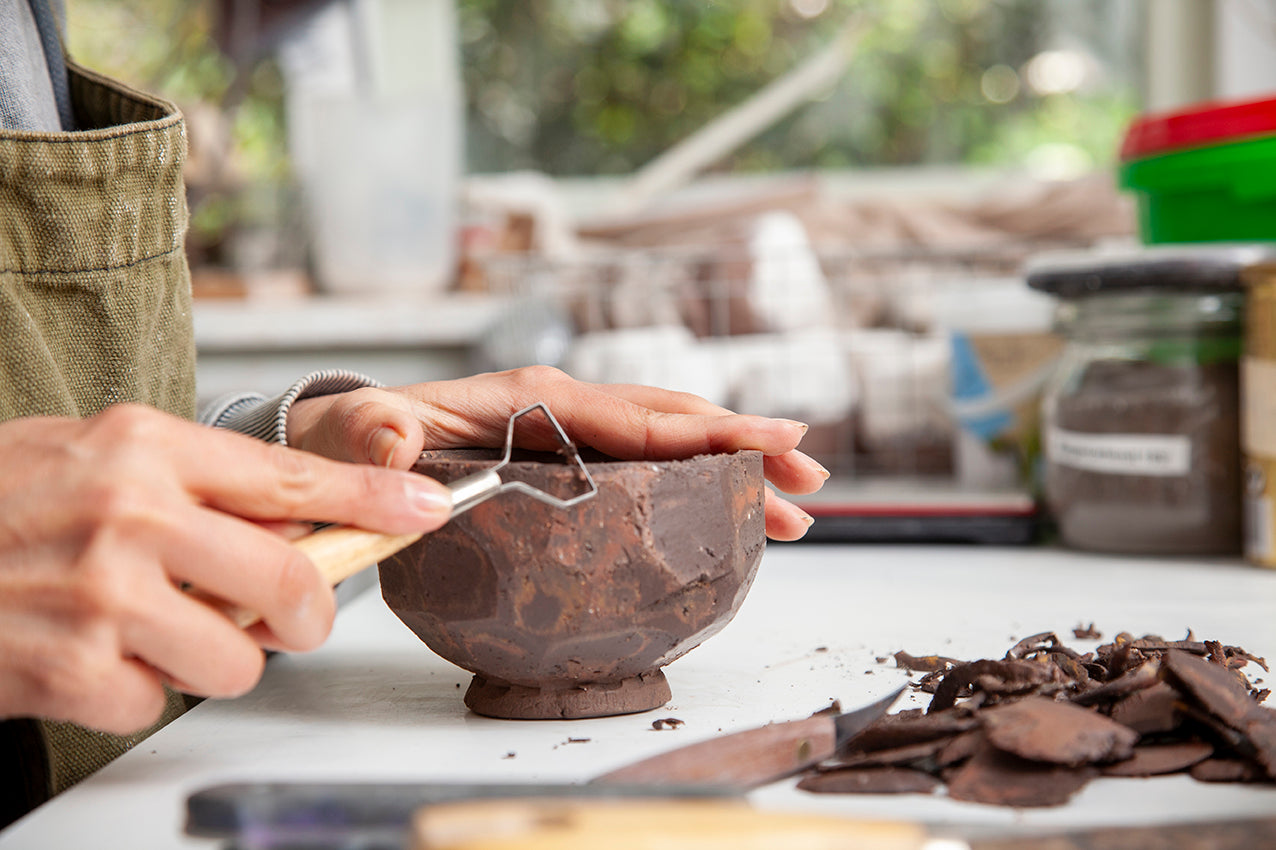Een traditionele Japanse keramische techniek

Wat is Kurinuki
-
Kurinuki enkele kop nr. 10
Normale prijs €45,00Normale prijsEenheidsprijs per -
Still Spume - klein
Normale prijs €58,00Normale prijsEenheidsprijs per -
Still Spume - klein
Normale prijs €45,00Normale prijsEenheidsprijs per
Wat maakt Kurinuki zo bijzonder?
De stappen van de Kurinuki-techniek
-
1: De keuze van kleisoorten
-
2: Gereedschap en techniek
-
3: Vorm en asymmetrie
-
4: Glazuur en oppervlaktebehandeling
Aanbevolen voor jou
Kurinuki set nr.5
De Kurinuki-serie bestaat uit functionele, eigentijdse ontwerpen, geïnspireerd op de klassieke Japanse keramiek Kurinuki. Bij deze techniek wordt elk item geleidelijk met de hand uit een klomp klei gesneden, waarbij het zich aanpast aan de aard ervan. Elk stuk draagt altijd de sporen van de handen en het gereedschap van de kunstenaar en onthult het maakproces. De patronen accentueren de artistieke kwaliteit van elk stuk. In haar Kurinuki-serie legt Sepideh soms de nadruk op klassieke elementen, maar overstijgt ze tegelijkertijd traditionele vormen.






Filosofische interpretatie
Kom meer te weten over Draumr
-

Op maat gemaakt
Lees hier meerOntdek het werk van onze makers en hun verhalen. Laat je inspireren om een uniek item te maken, speciaal voor jou.
-

Hulp bij interieuradvies?
Lees hier meerSoms heb je een beetje hulp nodig om een persoonlijk interieur te creëren. Wij hebben de perfecte oplossing voor je.
-

Over ons
Sluit je bij ons aanWij verbinden interieurdromers met een groeiend netwerk van Nederlandse meubelmakers en onafhankelijke ontwerpers.









